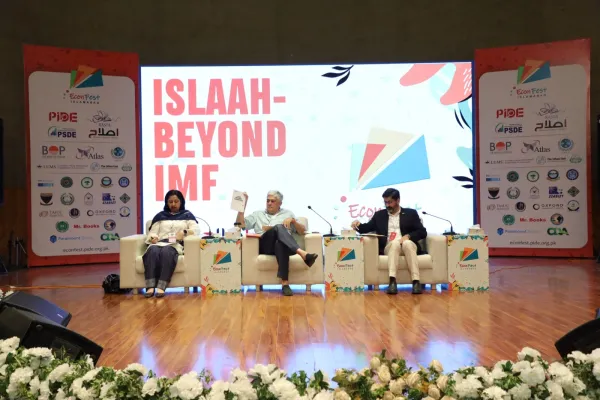i ECONOMY
Pakistan is grappling with an alarming surge in poverty, which reached an unprecedented level due to the compounding impact of the Covid-19 pandemic and the devastating floods of 2022. “A comprehensive analysis spanning the years 2018-19 to 2022-23 reveals a grim reality, with grave implications for the well-being of the nation,” highlighted Muhammad Ali Kamal, an economic policy adviser at the Ministry of Planning, Development and Special Initiatives. Talking to WealthPK, he added that efforts to quantify the 'poverty gap' revealed a staggering Rs1,950 billion deficit in 2022-23. “Despite a budgeted allocation of Rs687 billion for pro-poor spending in 2023-24, covering programmes such as the Benazir Income Support Programme, the social protection measures addressed only 35% of the existing poverty gap.” Consequently, he said an estimated 45.5% of the population, equivalent to 110 million people, was now living below the poverty line. “This signifies an alarming increase of over 31 million individuals in just four years, constituting the highest-ever rise in poverty levels in the country's history.” “Both 2019-20 and 2022-23 witnessed negative GDP growth, leading to an average annual GDP growth rate of a mere 2.7% over the four years. This stands in stark contrast to the annual population growth rate of 2.5%, resulting in a meagre cumulative increase of less than 1% in real per capita income since 2018-19,” he pointed out.
Kamal said that the aftermath of 2018-19, marked by the onset of the Covid-19 pandemic and subsequent floods in 2022-23, further exacerbated the situation. “The macro-econometric model projects a concerning 23% increase in the incidence of poverty from 2018-19 to 2022-23.” “The measurement of poverty varies, with estimates ranging widely due to differing approaches. Official estimates tend to downplay the extent of poverty, showcasing a gradual decline. The Pakistan Economic Survey of 2021-22, based on the percentage of the population below the poverty line, reported a decline from 29.5% in 2013-14 to 21.9% in 2018-19,” he added. However, the World Bank's estimates, employing an international poverty line of $3.65 per day, indicated a higher incidence, standing at 44.6% in 2013-14 and decreasing to 39.8% in 2018-19. The Social Policy and Development Centre suggested an estimate falling within this range, putting the poverty incidence at 37% in 2018-19. The planning ministry’s economic policy adviser concluded that in light of the distressing scenario, policymakers must consider significant measures, including progressive taxation and prudent expenditure cuts, to bridge the widening gap and ensure the long-term sustainability of anti-poverty initiatives. “The fate of millions hangs in the balance, demanding swift and decisive action to avert a humanitarian crisis.”
Credit: Independent News Pakistan (INP)








